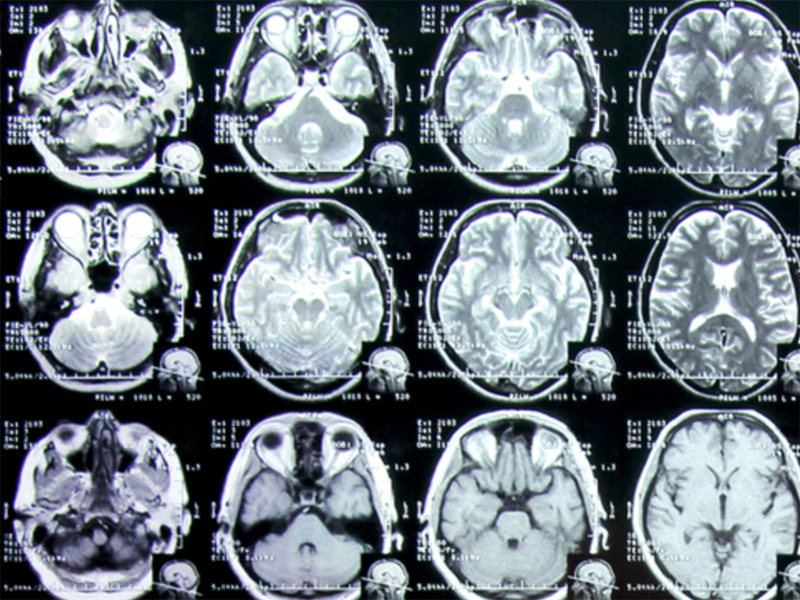A large study has identified key differences in the brains of people diagnosed with ADHD
The prestigious journal The Lancet has published a large study identifying differences in the brains of people diagnosed with attention-deficit hyperactivity disorder (ADHD).
It found ADHD is associated with the delayed development of five brain regions, and should be considered a brain disorder. This is vindication for people experiencing ADHD whose diagnosis is sometimes called into question as an invented condition used to label normal children who are not meeting unrealistic expectations of “normal” behaviours.
The study and its findings
Researchers from 23 centres in nine countries scanned the brains of people of aged four to 63 years, 1,713 with and 1,529 without ADHD. When they analysed all the data they found people with ADHD had slightly smaller brains overall, and in five of the seven specific regions there was a definite but very slight reduction in size.
They found these differences were more marked in children. When they analysed separately those who had and had not been treated with stimulant medication, they found no effect of medication. This suggests the differences are related to ADHD, and not an effect of treatment.
Not all cases of ADHD are the same
One important limitation of looking at brain images of people with ADHD relates to the diagnosis of ADHD, which is based on a person meeting a certain set of clinical criteria. Some of these are outcome-based and relate to a person’s ability to carry out tasks. For example, they may avoid tasks that require mental effort or leave tasks incomplete.
The result of this – fewer tasks completed – could have more than one possible cause. The lack of precision in the cause makes it difficult to align the diagnosis exactly with brain images.
Inefficiencies in the “thinking” function of the brain (called “executive functioning deficits”) have been identified in people with ADHD. These inefficiencies would make it harder for people with ADHD to carry out certain tasks, such as tasks that take a long time, are difficult and are not constantly rewarding or reinforcing. Therefore a person with ADHD might find motivation for homework extremely difficult to sustain, but electronic games could hold their attention for a far longer period.
The diagnostic criteria for ADHD ignore the emotional aspect. Using present diagnostic criteria, at least 40% of individuals with ADHD also meet diagnostic criteria for oppositional defiant disorder, a childhood behavioural problem characterised by a negative attitude, disobedience and hostility.
An even larger proportion probably have features of oppositional defiant disorder but do not reach the diagnostic threshold. This very substantial overlap requires explanation. The findings of the Lancet paper may indicate there is an emotional component that is intrinsic to ADHD.
It is possible some people with ADHD do not experience an adequate level of emotional satisfaction or sense of achievement in completing everyday tasks. This deficiency in the emotional reward could be an additional problem for some people with ADHD. These individuals would find tasks not only more difficult but also less satisfying, reducing their motivation to achieve. They might also be more moody and disagreeable.
Individuals with a combination of reduced emotional satisfaction (sometimes termed “reward deficiency”) and executive functioning deficits, would have two different mechanisms that would each serve to reduce their productivity.
Both of these mechanisms would contribute to their symptoms of ADHD, as they would result in fewer tasks completed. So because there is more than one possible underlying mechanism contributing to certain features of ADHD, it could be anticipated that a large cohort of individuals with ADHD would show a mixed picture, with a variety of different brain structures affected.
This would reflect differences in the balance of the deficits contributing to their symptoms. The study results are consistent with this concept – the scans show there is no single brain difference that can categorically diagnose ADHD, but they do involve brain centres related to emotion.
A valid pathology
The differences in the brains of people with ADHD confirm it is a valid diagnosis and the problems experienced by people with ADHD are genuine.
However, neuroscience has moved ahead of the clinical understanding of ADHD that is based on the definition in the Diagnostic and Statistical Manual of Mental Disorders.
We need more sophisticated but clinically relevant models that recognise ADHD results from a combination of deficits that interact to produce varying symptoms for every person who experiences ADHD.
Alison Poulton, Senior Lecturer in Paediatrics, Sydney Medical School Nepean, University of Sydney
This article was originally published on The Conversation. Read the original article.


